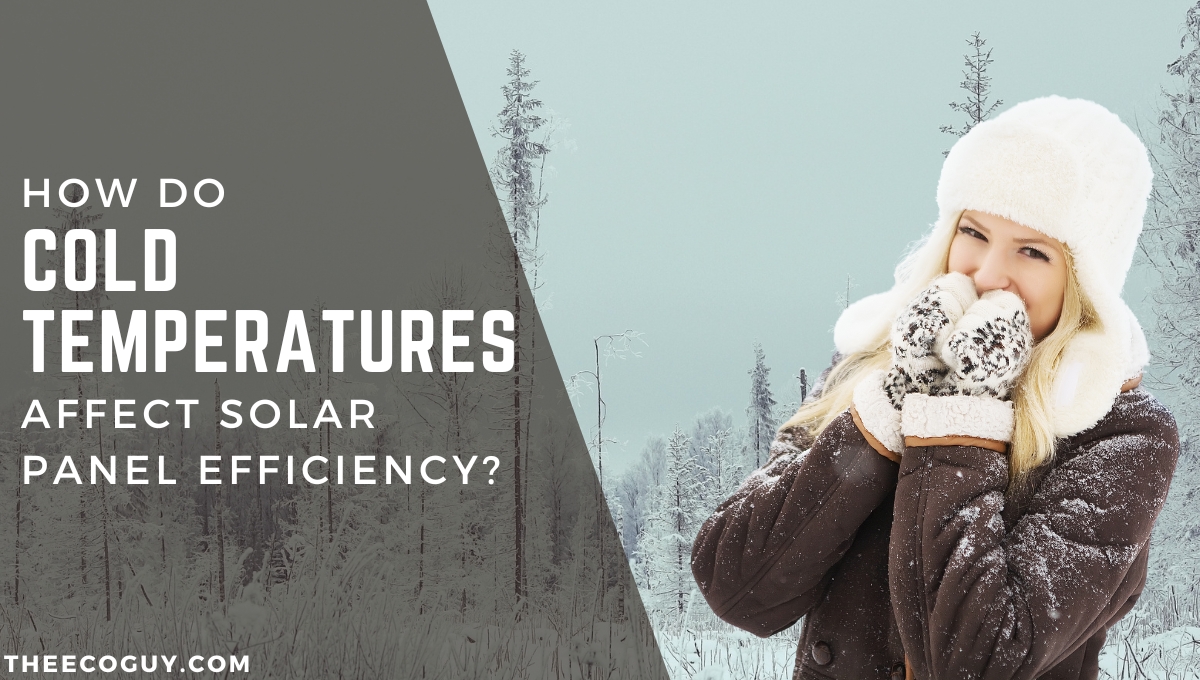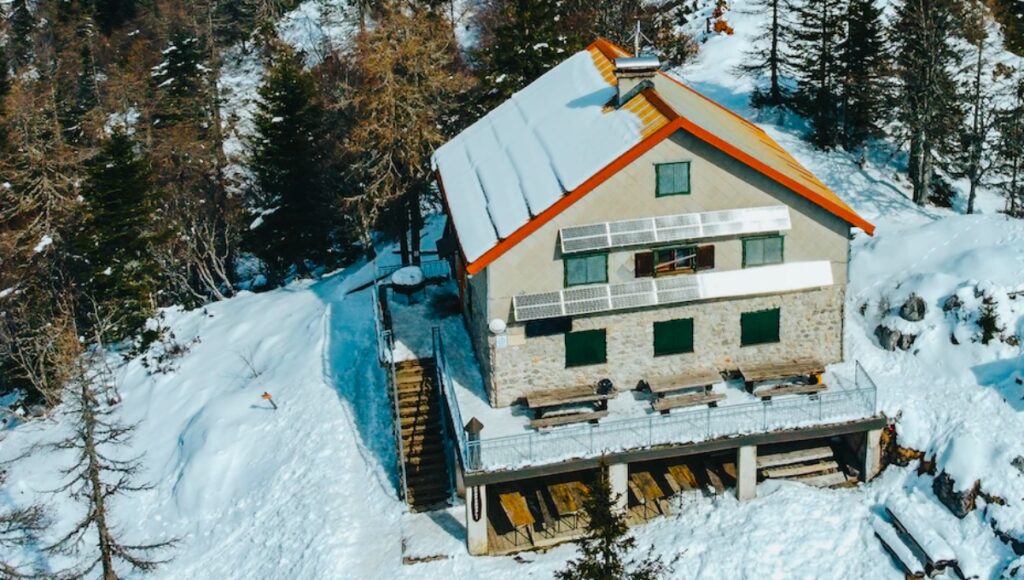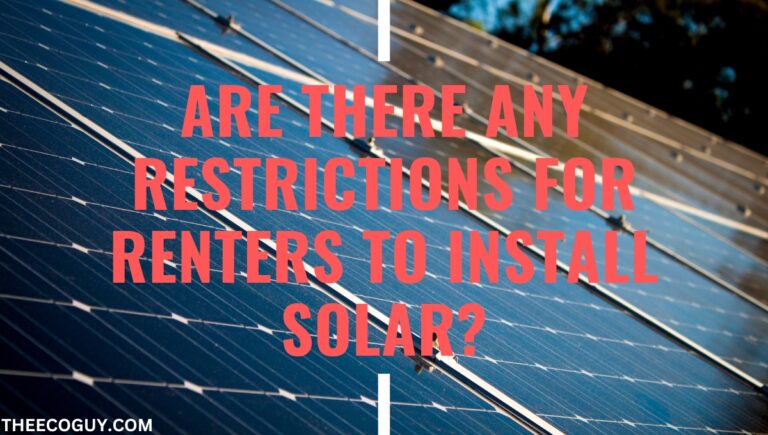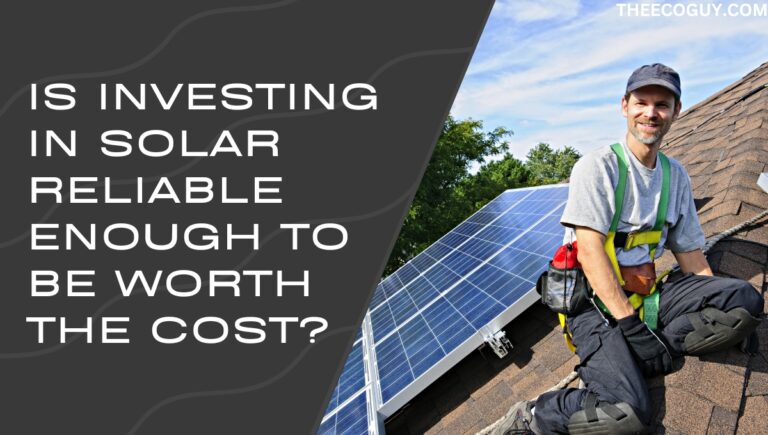How Do Cold Temperatures Affect Solar Panel Efficiency?

Do you live in a cold climate and have solar panels installed in your home? If so, you may be wondering how cold temperatures can affect the efficiency of your solar panel system. You may be wondering, do cold temperatures affect solar panel efficiency?
The answer is yes. Cold temperatures can reduce solar panel efficiency and output power. Solar cells are sensitive to temperature fluctuations, so when temperatures drop below a certain point their ability to transform sunlight into energy decreases.
The purpose of the article is to inform readers about how cold temperatures can affect the efficiency and output power of solar panel systems. It explains why this happens and what measures can be taken to optimize performance in colder climates. Let’s get started!
The Physics of Solar Panel Efficiency
How Do Solar Panels Generate Electricity?
For starters, solar panels convert energy from the sun into electricity. Photons (light particles) are absorbed by the panels, which then release electrons into a circuit. These electrons generate electric current and power your home or facility.
However, this conversion process is more efficient at higher temperatures and less efficient in cold climates. This is due to what is known as “thermal voltage.” Thermal voltage is a decrease in energy conversion efficiency as temperature drops.
When temperatures drop, the electrons move more slowly and have less energy to travel through the system. This results in the solar panel producing less electricity than normal.
How Does Temperature Affect the Performance of Solar Panels?
Temperature affects the performance of solar panels in two ways.
First, lower temperatures increase the resistance of the current in a solar cell, decreasing its power output. This is known as temperature coefficient.
Second, low temperatures can cause components to contract and expand, putting strain on the system and causing it to operate less efficiently.
The impact of cold temperatures on solar panel efficiency varies depending on the type of panel and the insulation used in the system.
Mitigating Cold Temperature Effects on Solar Panel Efficiency
Fortunately, there are measures you can take to increase the efficiency of your solar panel system in colder climates.
The first is to install an anti-freeze system. This is a device that uses heated glycol or other liquid to protect against freezing temperatures, ensuring your panels remain at optimal efficiency as temperatures drop.
You can also invest in insulated backing for your solar panels, which will help keep them warmer and reduce efficiency losses.
Finally, you can add a solar tracker, which will ensure your panels are always facing toward the sun during the day. This maximizes the amount of light they receive and helps boost their overall efficiency.
What Is the “Temperature Coefficient” and How Is It Used to Measure Solar Panel Efficiency?
The temperature coefficient is a measure of how much the current in solar cell changes as its temperature fluctuates. It is expressed in percentage terms and can be used to estimate the power output of a solar panel system at different temperatures.
In general, higher temperature coefficients indicate that solar panel efficiency will decrease more as temperatures drop.
For example, a panel with a temperature coefficient of -0.45%/°C would produce 0.45% less power for every degree Celsius drop in temperature.

Cold Temperature Effects on Solar Panel Efficiency
How Does a Decrease in Temperature Affect the Output of a Solar Panel?
A decrease in temperature will cause a decrease in the solar panel’s output power. This is due to thermal voltage, which causes electrons in the system to move more slowly and have less energy as temperatures drop.
It’s also important to note that the impact of cold temperatures on solar panel efficiency varies depending on the type of panel and insulation used in the system.
What Is the “Cold Temperature Derating Factor” and How Is It Used to Calculate the Reduction in Output Due to Cold Temperatures?
The “cold temperature derating factor” is a measure of how much the output power of a solar panel decreases as temperatures drop. It is expressed in percentage terms and can be used to calculate the reduction in output due to cold temperatures.
For example, a system with a cold temperature derating factor of -5% would produce 5% less power for every degree Celsius drop in temperature.
By understanding how cold temperatures affect the output of solar panels, you can make more informed decisions about system design and installation to ensure maximum efficiency even in colder climates.
Examples of Real-World Solar Panel Performance in Cold Temperatures
Some examples of real-world solar panel performance in cold temperatures include:
- A study of solar cells in Alaska found that, at -10°C, their output power was reduced by 15% compared to 20°C.
- In a test in Canada, at -15°C, the power output had decreased by 28% compared to room temperature (25°C).
- In a study in Colorado, the power output of solar cells at -30°C dropped by 54% compared to 25°C.
These examples show that cold temperatures have a significant impact on solar panel efficiency and highlight the importance of taking measures to protect against freezing temperatures.
By investing in anti-freeze systems, insulated backings, and solar trackers, you can help ensure that your solar panel system performs at peak efficiency even in colder climates.
Strategies for Optimizing Solar Panel Efficiency in Cold Climates
How Can Solar Panel Systems Be Designed to Mitigate the Effects of Cold Temperatures?
Several strategies can be used to ensure optimal solar panel performance in cold climates.
First, you should invest in an anti-freeze system for your solar panels, which will help keep solar panels from freezing and maintain their efficiency.
You can also invest in insulated backing for your solar panels, which will help keep them warm and maximize their performance.
Finally, you should consider investing in a solar tracker system to help orient the panels towards the sun, which can help keep them from getting too cold and reduce their power output.
By taking these measures, you can ensure that your solar panel system performs at peak efficiency even in colder climates.
What Are Some Best Practices for Maintaining Solar Panels in Cold Climates?
Some of the best practices for maintaining solar panels in cold climates include:
- Regularly cleaning and maintaining the solar panels to ensure optimal efficiency.
- Checking for signs of corrosion caused by cold temperatures, such as discoloration or cracking of the panels.
- Investing in anti-freeze systems to help protect the system from freezing temperatures.
- Installing insulated backings to help keep the panels warm and maximize their performance.
- Installing solar trackers to orient the panels towards the sun and reduce power output loss due to cold temperatures.
- Regularly monitoring system performance for signs of reduced efficiency due to cold temperatures.
By following these best practices, you can help ensure optimal performance from your solar panels even in cold climates.
What Are New Technologies or Materials That Have the Potential to Improve Solar Panel Efficiency in Cold Temperatures?
New technologies and materials are constantly being developed to help improve solar panel efficiency in cold temperatures. These include:
- Thermal Insulation – special insulating materials that can be applied to the back of the panel, helping keep them warm and maximize their performance.
- Anti-Freeze Systems – these use liquid or gas to help protect the system from freezing temperatures.
- Heat Transfer Systems – these use the heat generated from the solar panel’s electrical system to help keep the panels warm and maximize efficiency in cold climates.
- Solar Trackers – these orient the panels towards the sun, helping reduce power output loss due to cold temperatures.
- New Materials – new, more efficient materials are being developed that are better able to resist the effects of cold temperatures.
By utilizing these new technologies and materials, you can help ensure optimal performance from your solar panels even in colder climates.
Final Thoughts
Solar panel systems are designed to produce power from the sun’s energy, but cold temperatures can reduce their efficiency significantly. To help ensure optimal performance in colder climates, it is important to invest in anti-freeze systems, insulated backings, and solar trackers that will keep the panels warm and maximize their efficiency.
Regular cleaning and maintenance are also important to ensure performance in cold temperatures. Additionally, new technologies and materials are constantly being developed that have the potential to improve solar panel efficiency in colder climates.
By following these strategies, you can help ensure optimal performance from your solar panels even in cold climates.
Homeowners and businesses need to understand how cold temperatures can affect the efficiency of their solar panels. Cold weather can significantly reduce the performance of solar panels, which means lower energy output and higher electricity costs. It is therefore important to take steps to ensure optimal performance in colder climates.
We hope this article answered your question, “How do cold temperatures affect solar panel efficiency?”. We encourage you to view our other articles on solar!







